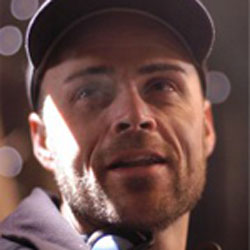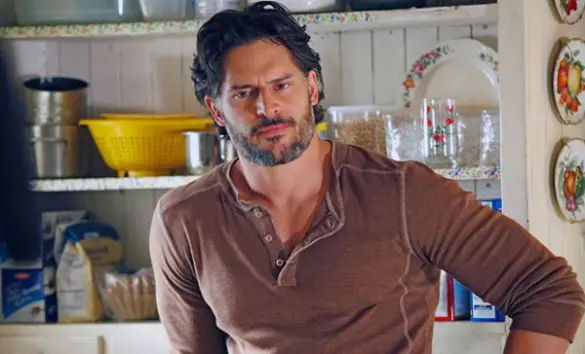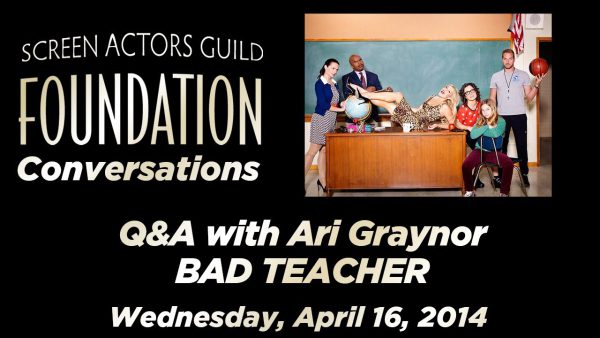
The last time I talked to acting coach Paul Kampf, we chatted about how his students get to act in films that are produced by and in his acting studio. I thought it was unique thing to do and loved the idea that actors get this kind of hands-on training.
But what happened after filming ended and the movie was finished? Release it on VoD of course! Kampf just announced that all of the studios movies would be available to be streamed on Vimeo. And the best news? Once the films break even, each student would participate in profits made after that!
I talked to Paul about his decision to stream the films, the profit participation for his actors, shooting 25-pages a day while filming and where he see’s this model of filming going in the future.
For more information on Paul and his studio, click here.
Your acting studio is unique in that you apply hands-on, real-world training to actors. When an actor leaves your program, do you feel they’re more prepared than the actor who goes for the more traditional training
Paul Kampf: I do feel that they have experiences in training, classes and production that make them uniquely well-rounded. I don’t feel there are absolutes for preparedness, but I ask a lot of the actor. I push the boundaries of time, while leaving a high-bar of expectation. Because of the requirements and tools provided, I feel that risk and confidence replace fear and self-doubt. That is my definition of a prepared actor. Who wouldn’t want to be on set or stage with talent like that?
Specifically, the big barrier for most actors is the audition process. It’s the most artificial and taxing facet of the craft. In my classes, an actor will work in an audition set up with new material almost every week. They get the material in parallel to the time-frame for auditions (two days prior or less). Therefore, they have to take the tools they’ve learned and put them into practice quickly.
Juxtaposed with the on-camera work, actors will do two-person scenes on stage about 25% of the time. However, they only get three runs of the scene. The first time they come in as if it’s opening night, having put their work into it a day or two prior. I don’t let them meet or rehearse with the other actor beforehand.
Each actor is then forced to prepare, experience, risk, fail, learn and go on. From watching the immense growth of the actors via this method, I can tell you the third time through a scene often offers performances only associated with months of intense rehearsal. The actors’ instruments are in shape. They understand risk/reward. Therefore, the results inspire those observing.
You’ve just started distributing your films on VOD, via Vimeo. How did this come about?
Paul Kampf: Because I believe in practical application of training, I had to find a way to move from talk to action. It started with one feature and eight actors in the first film, and then it moved to over seventy actors in two other features and a handful of shorts.
The features have won multiple awards, and have not only given the actors rare experience and great footage, but also industry interest in casting & representation. So, it has already served its purpose. Yet, because we’ve done everything ‘in-house’ it makes the most sense to also be closest to distribution.
Almost all VOD these days, no matter the platform, requires the filmmakers and producers to champion their own films and handle all marketing. That is the same with Vimeo VOD. We believe we have a lot in common with Vimeo in that we offer high quality, excellent value. Vimeo showcases talented independent filmmaking, and is populated by a community of film enthusiasts which speaks to our sensibilities. Since it’s non-exclusive, we have the right to move it to other platforms at any time.
Lastly, it makes it very easy for anyone to go to PaulKampfStudios.com to get any of our films. A few clicks and they can watch a film on their tv, tablet or smartphone.
How do you think it benefits the actors involved in the productions?
Paul Kampf: First and foremost, in classroom settings they are on camera most of the time with a monitor showing the actor in a medium or close up framing. They have the opportunity to observe actors live and on monitor simultaneously. From there, the actors have the benefit of getting a link to all of the takes from the last class a few days later. They have fresh eyes to see their own work and the work of their classmates only in the ‘framing.’ They get a director/producer perspective which amplifies the importance of what is in the frame.
On set, they are intricately involved in the making of each film. For the last two features, the majority of the crew on one film was the cast in the other film. When watching twenty other actors prepare, execute and overcome natural obstacles, they had so much opportunity to learn from the approaches of other professionals. This isn’t just about the craft while cameras are rolling, but also how different actors prepare; how they handles direction; and what changes happen in some actors when it’s on set and not in class.
My intent is that each actor learns to give everything to their work whether it is on set or in the classroom. Each environment then starts to have the same value for the actor. They learn an essential dichotomy of the acting process: Treat each take like another rehearsal, while giving over to it in the moment. Then and only then does an actor replace perfection as the goal with exploration.
Do the actors share in any of the potential profits?
Paul Kampf: Yes. Although films were made on ultra-micro budgets, there was some personal investment put into the projects. Once the films break even, the actors will be compensated with a share in the profits. Unlike traditional film investment, the actors will participate in perpetuity.
This excites me because if the films catch a wave of attention, the actors can benefit well from our collective success. It is my plan to put the profits on the studio’s end right back into future production. I’m trusting the momentum of the first three films will perpetuate the success of projects in the coming years.
You shoot an average of 25 pages a day? That seems crazy! Do you have rehearsals and are the actors memorized prior to filming?
Paul Kampf: I never intended to shoot that many pages a day. When I shot my first feature years earlier, I had a lot of difficulty with the speed of the camera/lighting set up. So, we were forced to shoot fewer takes with high page counts per day. In the end, the actors gave over to the work, no matter the limitations and saved a lot of the time lost.
Therefore, when I started shooting micro-budgeted projects, I wanted to let the limitations be the stimulation for a new approach. If I could build a rhythm with the talent behind the camera equal to the rhythm in front of the camera, I felt something new could be done.
We put that theory into practice on the first film, From Grace, with a shooting crew of under five people, including myself. We talked through specifics and also listened to one another for ideas that could expedite the process without sacrificing quality. The eight actors were in one class together, so we took class time, once a week, over a month to rehearse scenes and prep with the shooting team observing. When we all got on set, we were really ready to go.
But I realized that the method of training was the underlying reason why the actors could shoot so fast and effectively. Actors learned to prep fully on their own and trust the results when sitting across from the other actors in class. The set was an extension of that trust.
When we shot Amnesia & Brad’s Untitled Restaurant Project, there was significantly less rehearsal done. In fact, we used the few sessions that each actor had to improvise and explore around the scene as well. Of course, I know a good bit about the actors, so I had a short hand when it came to pushing and pulling an actor through a performance.
Where do you see this venture going in the future?
Paul Kampf: I see what we’ve done on these films as ‘proof of concept.’ No matter the budget, these films stand on their own as strong, engaging, unique stories. Yet the model will now be taken to larger budgeted projects as well as a series that my studio will produce, but the payoff for the investment will be much more.
For these projects, I still plan on using actors who train at my studio whenever possible. I know the level of their talent and want to take advantage of it. Yet, for the larger projects, we’ll make offers to selected talent just like any project in town. However, the talent will have a real share in the profits. I believe they’ll embrace this approach because it values the actor so highly and gives them a substantial place at the table. We’ll still make every dollar go on the screen, while allowing the talents on all sides of the camera to benefit through success.




